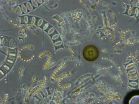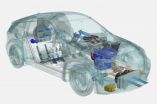(Press-News.org) (Boston) - Emergency departments (ED) provide a promising venue to address opioid deaths with education on both overdose prevention and appropriate actions in a witnessed overdose. In addition, ED's have the potential to equip patients with nasal naloxone rescue kits as part of this effort.
These findings are from a study published in the Western Journal of Emergency Medicine, and is the first study to demonstrate the feasibility of ED-based opioid overdose prevention education and naloxone distribution to trained laypersons, patients and their social network.
In the United States, deaths from prescription opioid overdose increased from 4,041 in 1999 to 16,651 in 2010. In 2011, an estimated 420,040 ED visits were related to overdose of prescription opioids and 258,482 heroin overdoses.
Since 1993, Boston Medical Center's (BMC) Project ASSERT has offered alcohol and drug use screening, brief intervention and referral to treatment to patients treated for intoxication in the ED. In 2009, Project ASSERT, with support from Boston Public Health Commission and Massachusetts Department of Public Health, also began offering overdose prevention education and naloxone rescue kits to emergency department patients at risk for opioid overdose.
In order to evaluate the feasibility of this program and describe the overdose risk knowledge, opioid use, and overdose response actions among patients receiving overdose prevention education, researchers from Boston University School of Medicine (BUSM) and BMC conducted a telephone survey of Project ASSERT patients between January 2011 and February 2012. Of the 415 patients who received overdose education during this time, 51 patients were surveyed. Of these 51 patients, 73 percent had received a naloxone rescue kit either in the emergency department or elsewhere, such as a detox facility, and approximately one third of the reported opioid use in the last 30 days.
In addition, more than half had reported witnessing an overdose and calling 911 for help. Among those with naloxone rescue kits, about one-third administered naloxone during the rescue.
"This study confirms that the emergency department provides a promising opportunity for opioid overdose harm reduction measures through overdose education and naloxone rescue kit distribution," explained lead author Kristin Dwyer, MD, emergency physician at BMC. "Our program reached a high-risk population that commonly witnessed overdoses, called for help and used naloxone to rescue people, when available," she added.
Although the study was retrospective with a low response rate, the researchers believe this study provides useful information for planning larger studies and programs to further evaluate implementation, benefits and harms of overdose prevention efforts in EDs.
INFORMATION:
The research was made possible by the support of the Department of Emergency Medicine and an Evans Junior Faculty Merit Award, Boston University School of Medicine, Department of Medicine.
Editor's note
In September 2013, as a result of this pilot project, BMC adopted a policy to make take home naloxone and education accessible to at risk ED patients prior to discharge, not only through Project ASSERT, but also through the inpatient and outpatient pharmacies. In 2014 Project ASSERT distributed 191 Naloxone rescue kits to ED patients and their social contacts; more than three time the number of kits distributed during the 2011 study period.
About Boston Medical Center
Boston Medical Center is a private, not-for-profit, 482-bed, academic medical center that is the primary teaching affiliate of Boston University School of Medicine. It is the largest and busiest provider of trauma and emergency services in New England. Committed to providing high-quality health care to all, the hospital offers a full spectrum of pediatric and adult care services including primary and family medicine and advanced specialty care with an emphasis on community-based care. Boston Medical Center offers specialized care for complex health problems and is a leading research institution, receiving more than $118 million in sponsored research funding in fiscal year 2014. It is the 11th largest recipient of funding in the U.S. from the National Institutes of Health among independent hospitals. In 1997, BMC founded Boston Medical Center Health Plan, Inc., now one of the top ranked Medicaid MCOs in the country, as a non-profit managed care organization. It does business in Massachusetts as BMC HealthNet Plan and as Well Sense Health Plan in New Hampshire, serving more than 315,000 people, collectively. Boston Medical Center and Boston University School of Medicine are partners in the Boston HealthNet - 14 community health centers focused on providing exceptional health care to residents of Boston. For more information, please visit http://www.bmc.org.
PROVIDENCE, R.I. [Brown University] -- Researchers from Brown University and the University of Rhode Island have demonstrated a promising new way to increase the effectiveness of radiation in killing cancer cells.
The approach involves gold nanoparticles tethered to acid-seeking compounds called pHLIPs. The pHLIPs (pH low-insertion peptides) home in on high acidity of malignant cells, delivering their nanoparticle passengers straight to the cells' doorsteps. The nanoparticles then act as tiny antennas, focusing the energy of radiation in the area directly around the cancer ...
CORVALLIS, Ore. - Researchers at Oregon State University have discovered how vitamin E deficiency may cause neurological damage by interrupting a supply line of specific nutrients and robbing the brain of the "building blocks" it needs to maintain neuronal health.
The findings - in work done with zebrafish - were just published in the Journal of Lipid Research. The work was supported by the National Institutes of Health.
The research showed that zebrafish fed a diet deficient in vitamin E throughout their life had about 30 percent lower levels of DHA-PC, which is a ...
PITTSBURGH, April, 13, 2015 - A serendipitous combination of technology and scientific discovery, coupled with a hunch, allowed University of Pittsburgh Cancer Institute (UPCI) researchers to reveal a previously invisible biological process that may be implicated in the rapid growth of some cancers.
The project, funded by the National Institutes of Health (NIH), is described in today's issue of the Proceedings of the National Academy of Sciences (PNAS).
"I was so amazed by what I was seeing," said lead author Masahiro Shuda, Ph.D., research assistant professor in Pitt's ...
HOUSTON - (April 13, 2015) - For decades, scientists and physicians have puzzled over the fact that infants with the postnatal neurodevelopmental disorder Rett syndrome show symptoms of the disorder from one to two years after birth.
In a report in the Proceedings of the National Academy of Sciences, Dr. Huda Zoghbi and her colleagues from Baylor College of Medicine and the Jan and Dan Duncan Neurological Research Institute at Texas Children's Hospital, unravel the mystery by looking at when and how the causal gene involved (methyl-CpG binding protein 2 or MECP2) binds ...
Fresh insights into how bacteria protect themselves - by forming a waterproof raincoat - could help develop improved products to protect plants from disease.
Researchers have discovered how communities of beneficial bacteria form a waterproof coating on the roots of plants, to protect them from microbes that could potentially cause plant disease.
Their insights could lead to ways to control this shield and improve its efficiency, which could help curb the risk of unwanted infections in agricultural or garden plants, the team says.
Scientists at the Universities of ...
A new analysis of the chemical make-up of meteorites has helped scientists work out when the Earth formed its layers.
The research by an international team of scientists confirmed the Earth's first crust had formed around 4.5 billion years ago.
The team measured the amount of the rare elements hafnium and lutetium in the mineral zircon in a meteorite that originated early in the solar system.
"Meteorites that contain zircons are rare. We had been looking for an old meteorite with large zircons, about 50 microns long, that contained enough hafnium for precise analysis," ...
Diversity of life abounds on Earth, and there's no need to look any farther than the ocean's surface for proof. There are over 200,000 species of phytoplankton alone, and all of those species of microscopic marine plants that form the base of the marine food web need the same basic resources to grow--light and nutrients.
A study by a team of scientists from the Woods Hole Oceanographic Institution (WHOI), University of Rhode Island (URI), and Columbia University, published April 13 in the Proceedings of the National Academy of Sciences reveals how species of diatoms--one ...
ANN ARBOR, Mich. - One of the brain's main jobs is information processing - what is critical, however, is that information in the brain gets transferred to the right places at the right times.
Research on large-scale brain networks by the University of Michigan Medical School reveals that "hubs" in the brain - highly connected regions that like hubs of the airport system - tend to consistently attract information flow.
"Understanding how information transfer occurs in the brain is critical, especially if network hubs are taken off line by anesthesia, tumor or stroke," ...
This news release is available in German.
How can a pleasant vehicle climate be achieved efficiently? Researchers at the Technische Universität München (TUM) pursued this question in the context of the research project Visio.M funded by the German Federal Ministry for Education and Research (BMBF) with a total of 7.1 million euro. The results of their research show that the potential of energy efficient air conditioning is all but exhausted. And this applies also to gasoline powered cars.
Inefficiency has its advantages, too: In the past, waste heat ...
Researchers are beginning to explore whether the genetics of patients who experience a placebo effect are different from those of patients who don't. It's well known that people can feel better if they believe they are receiving treatment, but the biological pathways involved are relatively unexplored. In a new review, publishing April 13 in Trends in Molecular Medicine, scientists at Beth Israel Deaconess Medical Center discuss what we know as well as possible ethical issues related to conducting genetic tests to determine whether a patient is a placebo responder.
"Understanding ...


